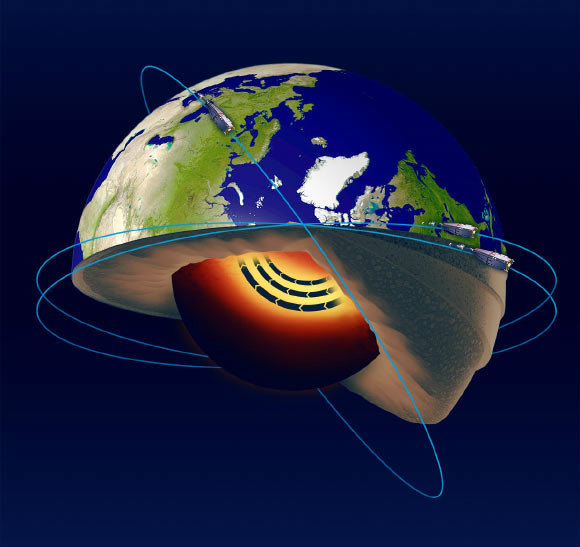Researchers from the University of Leeds have discovered a jet stream within the Earth’s molten iron core using satellite data.
The discovery, published in the journal ‘Nature Geoscience’, comes following the use of three European Space Agency Swarm satellites to measure and untangle the Earth’s magnetic signals to provide an “x-ray” image of the planet.
Previous research had found that changes in the magnetic field indicated that the outer core was moving faster in the northern hemisphere under Alaska and Siberia.
The new data has revealed that these changes are caused by a molten iron jet flow estimated to be 420 kilometres wide and moving at around 50 kilometres per year.
The paper’s lead author, Dr Phil Livermore, from the University of Leeds, said:
“We’ve not only seen this jet stream clearly for the first time, but we understand why it’s there.
“We can explain it as an accelerating band of molten iron circling the North Pole, like the jet stream in the atmosphere.”
The flow is three times faster than the typical speed of the outer core and hundreds of thousands of times faster than the speed of the Earth’s tectonic plates.
It is believed that, due to its proximity to two different boundary regions 3000 kilometres below the Earth’s surface, the molten liquid gets squeezed out sideways to form a jet stream.
Co-author Professor Rainer Hollerbach, from the School of Mathematics at Leeds, said “You need a force to move the liquid towards the boundary. This could be provided by buoyancy, or perhaps more likely from changes in the magnetic field within the core.”
The use of the satellites to provide this data is thought to mark the first important step towards learning more about the Earth’s inner workings.
Rune Floberghagen, the European Space Agency’s Swarm mission manager, announced that further surprises are likely.
“With the unprecedented resolution now possible, it’s a very exciting time – we simply don’t know what we’ll discover next about our planet!”
Jonny Chard
(Image: ESA Swarm Satellites)

